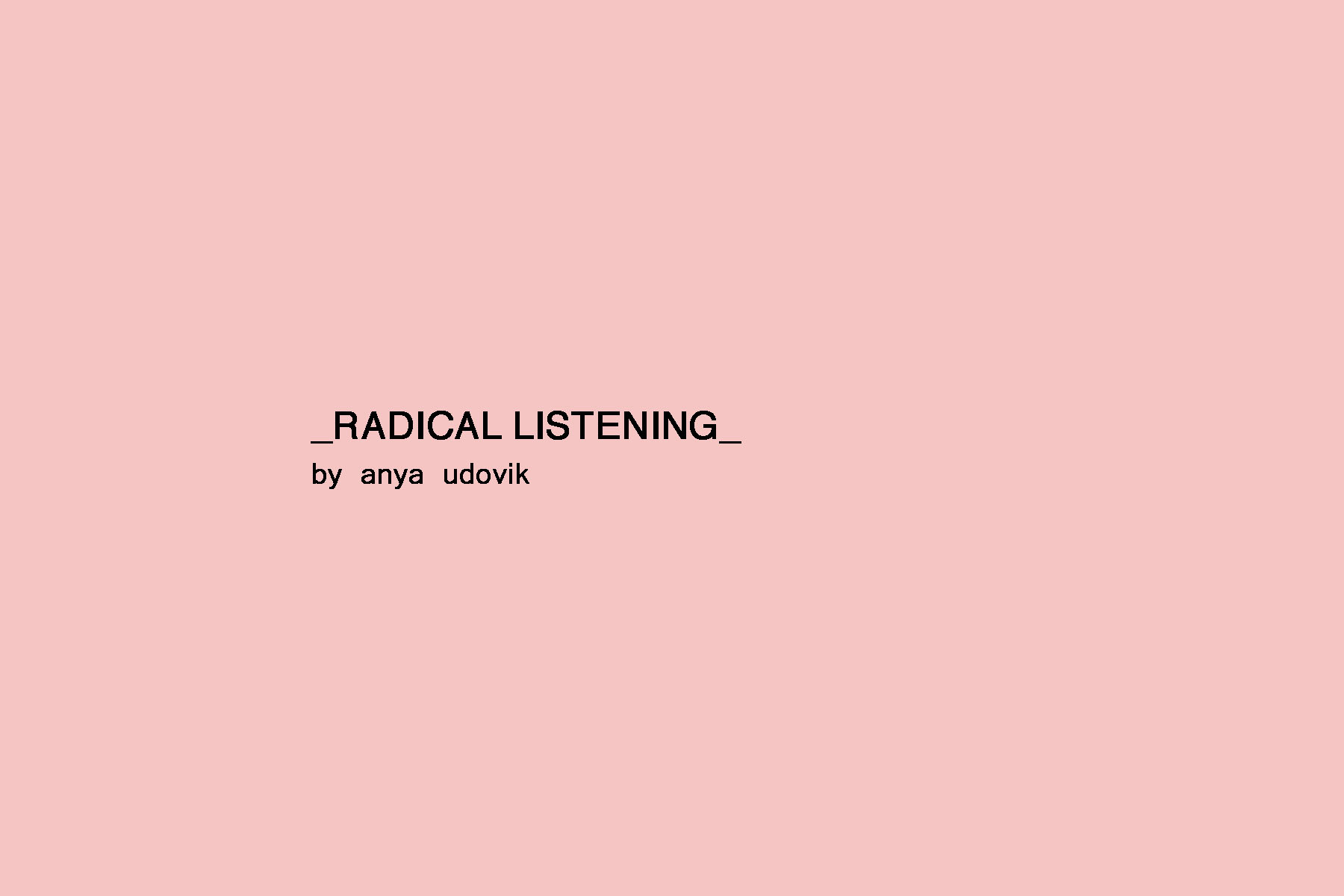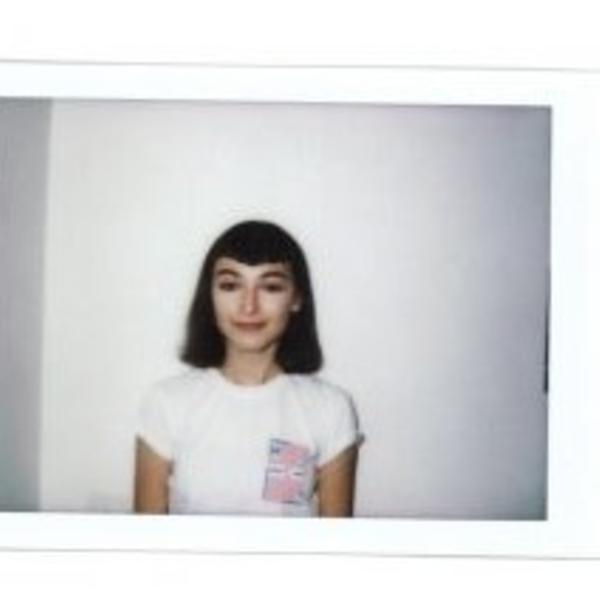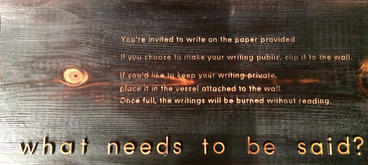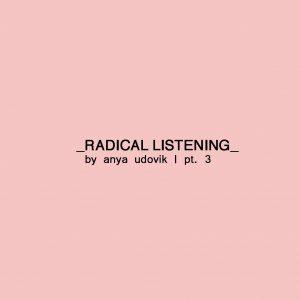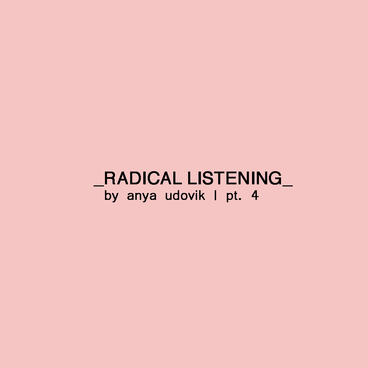Rebecca Krinke’s artwork, What Needs to Be Said, is a project within the exhibition The Talking Cure, located in the Target Studio for Creative Collaboration at the Weisman Art Museum at the University of Minnesota. In this post and those to follow, I will be reflecting upon the work’s location within the larger field of museology as well as its implications within the Weisman Art Museum and larger university community.
The blog posts in this series are being written with advising and guidance from Dr. Laura Joseph, the curator of the Talking Cure, Dr. Jane Blocker, Department Chair and Professor of Contemporary Art HIstory at the University of Minnesota, Katie Covey, Director of Student Engagement at the Weisman Art museum, and the artist herself, Rebecca Krinke. The intention of this series is to use Krinke's work as a lens through which to investigate the function and evaluate the success of participatory art work for addressing community concerns and social conflicts. Investigating Krinke’s work and its location within the Weisman Art Museum and the larger context of the University will enable me to examine contemporary museum practices. In order to do so I will be studying the work, and surrounding community, over the course of the next four months and reporting my findings through monthly blog posts.
Going into this project, I had one word I wanted to associate my work with: listening. However, I must admit to some the reluctance I felt when confronted with naming this series. Listening is not enough. While listening implies an active role, one which emphasizes observation, analysis, and engagement; I want to do more. Therefore, by adopting “radical listening” as my title I aim to create an online presence which gives voice to Rebecca Krinke’s work in its historical, as well as, its contemporary sense. I will use the piece as a jumping off point to discuss the evolving role of the museum on a national and local level. Radical listening, as Kenneth Tobin discusses in his Key Works in Pedagogy, looks at the practice as one which gives voice to every individual – to identify the boundaries, the possibilities, and weaknesses of a given idea. Only consensus can bring forth the steps towards agreeing on a possible alternative. Radical listening implies the inclusiveness of all voices in the problem solving process.
How does this practice of radical listening contribute to my project? While providing you the historical and contemporary context of What Needs to Be said?, I will ask questions of many, the Weisman staff, both invisible and visible, and those outside the institution with various degrees of familiarity with the museum structure. In the end, consensus may not be reached. However, my aim is not to obtain consensus, but rather, to listen to what needed to be said, and to increase the community’s understanding of museum practices and the museum structure--its established and shifting purposes and its strengths and weaknesses as an institution within the community. Because my aim here is not to dominate the conversation, I want to hear from you as well.
To begin this installment, I want to reflect on Mike Murawski’s work as the Director of Education & Public Programs at the Portland Art Museum and the founding author and editor of ArtMuseumTeaching.com. Murawski aims to use the online blog platform as a means to reflect on the current status and possible advancement of museum education . In his post from July 2016, The Urgency of Empathy & Social Impact in Museums, Murawski reflects on recent visible acts of violence in the nation and the role of museum education as a way to facilitate dialogue, foster understanding, and give voice to marginalized communities. I want to highlight an idea brought up by Murawski, which is that museums need to be an institution we see as “us” rather than “it.” With this statement, Murawski emphasizes the importance of seeing the institution as one run by individuals rather than a space outside the realm of human management. His point becomes clear as he states that “any change that must be done to the museum signals a change that must be done with us.” Change starts at the administrative levels of the museum and far too often any change ties into the funding structure of the institution. Fortunately enough for you, this topic will be touched on in a later post. Today, however, I want to stick to my main point in writing this post.
Murawski’s call for empathy in the museum is an opportunity to compare our own efforts to elicit empathy in museums in the Twin Cities, more specifically at the Weisman. One way empathy is engendered and practiced at the Weisman is through the curation of art objects and exhibitions. Both Melissa Stern and Rebecca Krinke’s works in the The Talking Cure, meditate on the internal self, whether through Stern’s series of sculptural objects with specific narratives, or Krinke’s charred cedar wall with the invitation to say “what needs to be said”. Dr. Joseph, the exhibition’s curator, took this intentionality even further through a series of programs aimed to build on the artists’ efforts to elicit audience engagement. The programs included an artist panel moderated by psychoanalyst Gloria A. Levin , a workshop and a reading of The Story of my Teeth by the author, Valeria Luiselli, an interdisciplinary event Reflections on the Unspoken, featuring a conversation between Rebecca Krinke, University of Minnesota scholar and author of the memoir in progress, “She Did Not Speak,” Leslie Morris, and Grammy awarded countertenor Ryland Angel, as well as one program that has yet to be realized, during which, four days prior to the exhibition closing, the private messages placed into Rebecca’s installation will be burned at a public ceremonial event.
The final program Dr. Joseph planned took place on January 18th and was entitled Open Mic Night. The program, which was inspired by The Talking Cure and hosted in collaboration with University of Minnesota student group Active Minds, provided an opportunity to for students vocalize their responses to Krinke’s “What needs to be said?” The free form Open-Mic style event was complemented by laughing yoga lessons and an array of mental health resources. As an effort to destigmatize mental illness and allow the community express oneself, I took to radical listening with the intention to listen without a filter.Here is what needed to be said:
From the start, Open Mic invited students, staff, and faculty to perform--whether it be a poem, song, or a personal reflection. An array of interests and talents emerged one by one. Themes of confusion, alienation, frustration, calls to actions were voiced through spoken word and music. Only interrupted by a chance to participate in laughing yoga.
Walking in, I was drawn by the transformation of the Riverview gallery which housed the event itself. By no means did the setup indicate stuffy formality, rather, an atmosphere of casual welcoming was suggested though the textured soft-tonal carpets, tables filled with coloring books and supplies, the convenient coffee bar with perfectly crafted free caffeinated beverages. Within the event, students could view Rebecca Krinke’s latest work, a Freudian style chaise sofa, draped in translucent material, with three pillows stuffed with strips of shredded paper and sewn into the same translucent fiber cloth. Within the pillows, on the strips were words reflecting the women who shaped Freud's famous Talking Cure practice. Visitors to the event were greeted by the WAM Collective, and given a copy of the Collective’s hand bound Wellness Toolkit, a limited edition Wellness resource filled with tips and self reflective methods. Counselors from the University’s Mental Health Services were on site and eager to talk about ways to maintain balance in the upcoming semester. Situated in the Riverview gallery, the event, nestled at the Weisman provided a sense of rhythm though the gallery spacious non uniform layout, masterfully designed by Frank Gehry, and its proximity to the Mississippi river--overlooking downtown Minneapolis itself.
I had a chance to talk to several audience members and performers. Across the boards, positivity and support was voiced from the attendees. This was apparent throughout the event as cheers echoed in the gallery while nervous performers navigated their 5 minutes before the microphone. People listened, discussed, and responded as the event roofed a newly-formed, temporary community.

While talking to the various performers about their experience at Open Mic, I found myself referencing a particular train of thought. While explaining my connection to the museum and this particular undertaking, I became curious to forge a connection between the urgency of Rebecca’s piece, done in a fairly private space in a non-event setting, and the urgency to express oneself on a far more populous platform. I found it curious to connect the two themes, thinking largely about what drives one to take the pen, or get up on stage. However, I realize, for many this may be a deeply personal catalyst. Yet I was fortunate enough to get accounts from three very different performers.
I spoke to Paul after his comedy routine. One of the more unique performances, Paul branched away from spoken word or music and utilized a different genre of performance altogether. I quickly recognized Paul from our laughing yoga crashcourse earlier that evening. I personally found it very fitting to see him later that night on stage enacting comedic sketches. In fact, that is exactly what Paul referenced himself, in a way, he credits laughter yoga as the fuel which prompted him to get on stage that night. However, this was not his first performance. Paul often gets on stage for the exact same proposed. When asked why, Paul paused to think about my rather vague questioned, and answered it acknowledging the need for the thrill, the adrenaline.
A similar answer was given to me by Nilesh. Nilesh performed a series of beetbox, infused with spoken word pieces. Nilesh attested to the need for the excitement, the interest of conquering the fear and stepping outside the comfort zone. Which left me wondering if that was a key difference between the event and Rebecca’s prompt. When confronted with the opportunity to anonymously write down what has to be said, is there a sense of fear, excitement. Is there a personal barrier one must overstep? And if so, what is the reaction? Do you feel accomplished or continue to house a sense of anxiety? Is the experience at all cathartic? Nilesh also attended laughter yoga and attested to the lightness he felt after. Open mic, for Nilesh, was a way to exercise his interests, and meditate on his own comfort zone.
For a moment during the evening, I stepped out to walk back to the Target Gallery, look over The Talking Cure and observe any changes in Rebecca’s installation. The nature of the work allows for continuous renewal of the language visible to the viewer without interaction (reaching over and flipping through the clamped pieces of paper). I often find myself hesitant to look though, in a way, I feel as though I am breaking some sort of privacy contract, as though I am looking though a diary. Then again, I always find myself asserting the title of the piece What Needs to be Said, it is an invitation to be heard. I suppose, I need to operate under the idea that the writers want to be heard. While in the gallery, I overheard a rich, embodied delivery of what appeared to be a poem. Following the sounds, I ended back in the Riverview gallery, where I encountered the performance by Hallelujah. With their robust beautifully eloquent, poignant delivery, Hallelujah spoke out about their identity as a person of color in the turmoil of the current political layout. As a long time participant in speech in high school, Hallelujah’s interest in performing at open mic was in part credited to their recent need to acknowledge personal writing, rather than those performed at tournaments. It’s a recent switch and I wish them best of luck on this journey.
In my mind, without doubt, the event was a success. Whether you judge success as something reflected by the numbers (a total of 285 attended the event), or content (the event featured a large format of topics and genres), I would argue that Open Mic succeeded in both measures. Were you there? Share a memory, tell us a personal highlight. Do you have any thoughts on the origin of communicating our inner turmoils, experiences, woes, etc? Comment, I would love to hear from you!
